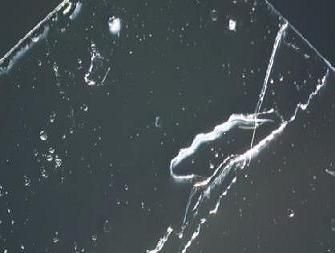
Glass is probably one of the most commonly used materials, known to us. Right from simple cookery utensils to eye glasses, lighting systems, construction works (doors, windows), camera components and sophisticated machinery, glass is used in every aspect of life. Even though, we have been using glass in so many ways, not many of us actually know the answer to the question - is glass a liquid, solid or gas. For better understanding, let's take a brief look at the components of glass before we discuss the actual state of glass.
Components of Glass
The primary component of glass is a large proportion of silica along with smaller amounts of soda (sodium bicarbonate or potash) and lime. In nature, these particles when subjected to lightning and volcanic eruption lead to formation of glasses in forms of beads, specks and other shapes. Basically all types of glasses are available in optically transparent forms and are characterized by very high viscosity and susceptibility to breakage, except for few types (e.g., borosilicate glass).
Each of the component elements play a crucial role in maintaining the amorphous solid state of glass. Like for instance, soda reduces melting point and lime stabilizes the chemical composition of the resulting compound. During commercial production of glass, additives are added in specific concentrations to impart certain characteristics, such as color, luster, reflectiveness and hardness. Also, the production steps of glass, which include heating to a very high temperature (about 1700° C ), cooling time and treating of glass, are monitored strictly to get the desired characteristics.
Physical State of Glass at Room Temperature
The origin of this common physics question is attributed to two main sources - the first is that glass used in very old churches are thicker at the base than the top portion and the second is with reference to the statement, 'glass is a frozen supercooled liquid' mentioned in a book, written by Gustav Tammann (1861-1938), a German physicist. In an explanation to the first source, scientists are of the opinion that glasses used in those times were manufactured by the Crown glass process, which resulted in thick panes which were not uniform. The heavier side or the thicker side was oriented at the bottom. Thus, the bottom portion is relatively thicker due to production error, not because of the liquid state of glass.
One of the main features of glasses is that they are amorphous solid material, meaning the constituent atoms are not arranged in an orderly manner. In crystalline solids, the atoms and molecules are assembled in a proper manner, which at the time of melting, move and flow freely. Thus, there is a distinctive demarcation between the two phases, solids and liquids in crystalline substances. And each phase has a distinct density and viscosity, which become higher as the liquid cools down.
In case of glass, the molecules even after cooling down below its melting point do not crystallize because of the lack of nucleation sites. With the rapid increase in viscosity, the glass molecules solidify slowly and form a thick amorphous solid. No doubt, the molecules that make up glass are arranged in an disordered fashion. But there is sufficient cohesion between them to exhibit a solid, yet amorphous state. This disordered arrangement of molecules give glass its characteristic reflective property.
Thus, we have seen there is no definite answer to whether glass is a liquid or solid. Strictly speaking, we can assume glass or stained glass as a phase that is neither liquid nor solid. Or else, it is an intermediary state of matter between an ideal liquid and an ideal solid, wherein the molecules are disorderly arranged, but with sufficient amount of rigidity to hold the molecules together in a specific shape.





